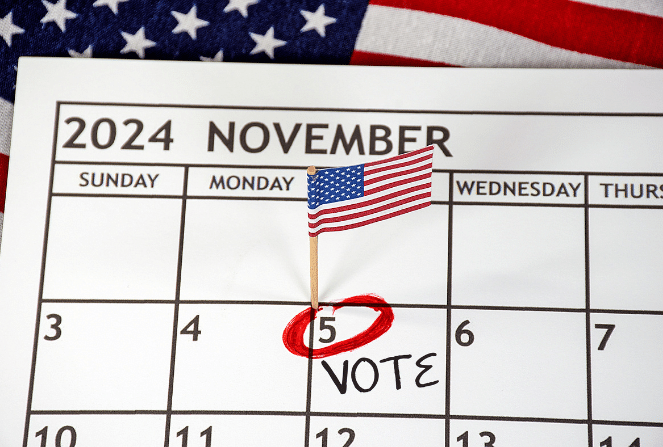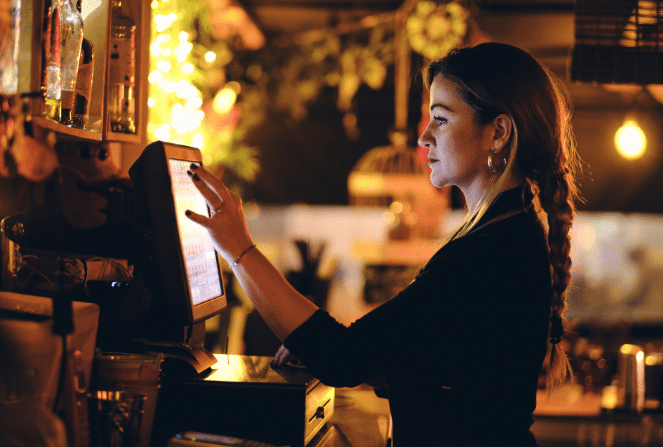Finally, the Great Reopening is here.
For most of the country, spring is in full force, vaccinations are rolling out, and slowly but surely, restaurants are welcoming guests back to sunny patios and (sanitized, ventilated, plexiglass-ed) dining rooms.
It seems diners are more than ready for re-entry. But restaurant employees? These days, they’re harder to come by than ever before.
Restaurateurs have long struggled with a competitive labor market. As Covid drove temporary and permanent shutdowns throughout 2020, it seemed the businesses that managed to stay open might have their pick of the worker pool. But that hasn’t been the case: Restaurants looking to hire are finding that applicants are few and far between, and when they do get in touch with candidates, they often aren’t showing up for interviews.
That’s a primary reason why the Aspen Institute’s Food and Society policy program has just released new operating procedures for restaurants. “Safety First: Protecting Workers and Diners as Restaurants Reopen” is an incredibly detailed resource, informed by rigorous research and the very latest guidance from the CDC and local and state health departments.
Corby Kummer, the executive director of the Food and Society program, spoke with us about the guidance and how restaurants can use it to bring diners and employees back safely. Read on for Corby’s take, as well as a breakdown of the document and links to everything you need.
What is “Safety First?”
“Safety First” is a detailed digital and print-ready resource that restaurants can use to lower the risk of Covid exposure and transmission.
The 74-page document begins with an easy-to-follow explanation of what we know now about Covid: how it spreads through air and on surfaces, how to prevent transmission, the role vaccines play, etc. But most of the guide is dedicated to step-by-step, ready-to-use protocols for restaurants, with information specifically around:
- outdoor dining
- indoor dining
- mechanical ventilation systems
- take-out and delivery
- preventive measures for workers
- restroom cleaning
payments - back of the house
- worker arrival
(and more).
“We want it to be a national mark of confidence and safety,” Corby said. “It is absolutely up to the minute with what the CDC is saying — but it’s still high level and achievable.”
“Never before have these logos come together to co-endorse the same document. This has the support of the entire restaurant industry, big and small.”
Corby also called out the Covid Pledge and the Diner Code of Conduct, two additional pieces of collateral that are included “Safety First.”
“These are basic ground rules for everyone,” Corby said. “We’d like to see restaurants printing out the Pledge and the Code of Conduct and hanging them in their windows as a way of saying, ‘We’re doing these things to keep you safe, so you can feel comfortable here.’”
Why was “Safety First” created?
The idea, Corby said, was to provide a (much-needed) national standard for Covid-related protocols.
Restaurant operators understand the importance of making diners and employees feel protected as business reopens. But the way they’re going about it is all over the map — literally. Guidelines vary from state to state and city to city. And while their efforts are well intentioned, some restaurants are actually over-complicating Covid procedures.
“Safety First” is designed to eliminate confusion, guesswork and unnecessary measures.
“There has been a rush to reopen, there’s pressure from different business sectors. With state governments and city governments, restaurants are caught between two sets of rules,” Corby said. “Having a national set is the most useful aspect of this. None of it is overcomplicated, none of it is expensive or hard.”
How is “Safety First” different than other resources currently available?
How restaurants are handling Covid protocols varies wildly right now. Part of the problem is that there’s a lot of content out there, and it’s not always clear which sources are credible. Plus, even credible sources can be contradictory.
Here again, “Safety First” was designed to be the source of truth for restaurants at this point in time. It was informed by the very latest data coming out of the CDC; in fact, representatives from the CDC were directly consulted in the production of the guide.
“Wherever we talk about payments in this guide, we say to go cashless.”
What’s more: Safety First is the first and only document that has been signed off on by some of the most trusted and respected organizations in the industry — The Aspen Institute’s Food and Society Program, World Central Kitchen, the National Restaurant Association, the James Beard Foundation and the Independent Restaurant Coalition.
“Never before have these logos come together to co-endorse the same document,” Corby said. “This has the support of the entire restaurant industry, big and small.”
How can Safety First help with the ongoing worker shortage?
There are a number of reasons why restaurants are struggling with the worker shortage. It’s been noted that unemployment may pay more than some workers were making. Other people have left the industry for daily pay gig economy jobs or even Amazon warehouses.
“There’s competition that we didn’t have before,” Corby said. “But also, workers don’t necessarily feel safe. We think this is a way of increasing employee confidence in restaurants that are looking to hire.”
“Safety First” includes suggestions that restaurants can use to make it easier for employees to return. For example: One Fair Wage provided scripts that hosts can use to explain new Covid rules to diners, so servers can be spared from any potential conflict.
“We want diners to have the best experience with servers, so that they’ll leave them as big a tip as possible and protect maximal earning opportunities,” Corby said.
What are some key takeaways from “Safety First”?
- “Restaurants can’t be in the business of verifying who’s been vaccinated.” Vaccines are the primary reason there’s a light at the end of the tunnel, but the truth is that we’re just not there yet. The majority of the U.S. population has yet to be vaccinated. Making everyone follow the same rules, regardless of whether they’ve been vaccinated, will eliminate variables and make it more seamless for restaurants to operate safely.
- “If it’s possible, go cashless.” Corby says wherever they discuss payments in the guide, they advocate going cashless. That means digitizing customer transactions as well as the tip-out process for employees.
- “So much of this is about treating restaurant staff courteously and considerately.” “Safety First” advises restaurants not to require an official Covid diagnosis or any other proof if someone isn’t feeling well; it should be “as easy as possible” for employees to stay home so that they don’t infect others. Corby acknowledged that this level of support, especially when it comes to employee health, is long overdue in the industry.
Read before reopening
The smartest thing restaurants can do as they reopen? Page through “Safety First” — top to bottom.
It’s not a short document, but it’s a quick read, it’s easy to digest, and it’s literally everything a restaurant needs to know about reopening in the time of Covid.
“Safety First” saves restaurants the time and hassle of doing their own research, and they won’t waste resources on excessive, over-the-top protocols. Most importantly: They’ll have peace of mind that comes from knowing they’ve done everything they can to keep their people safe — and to be good stewards of public health.




